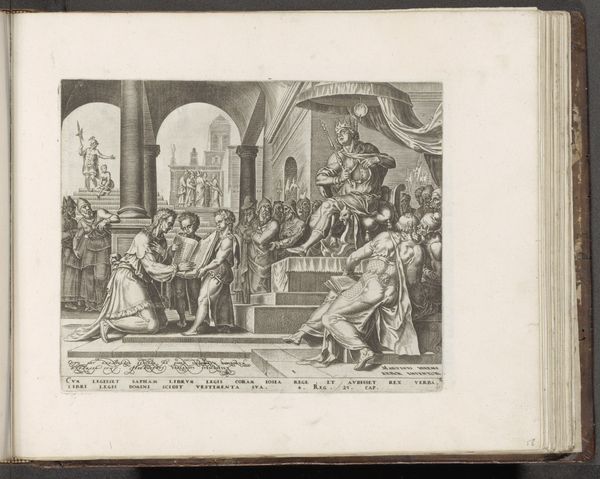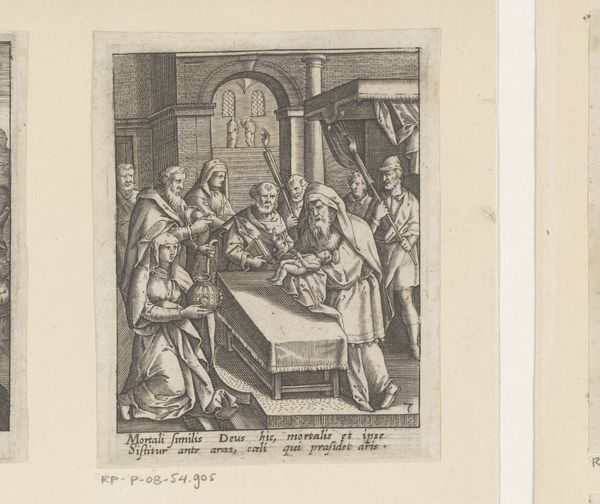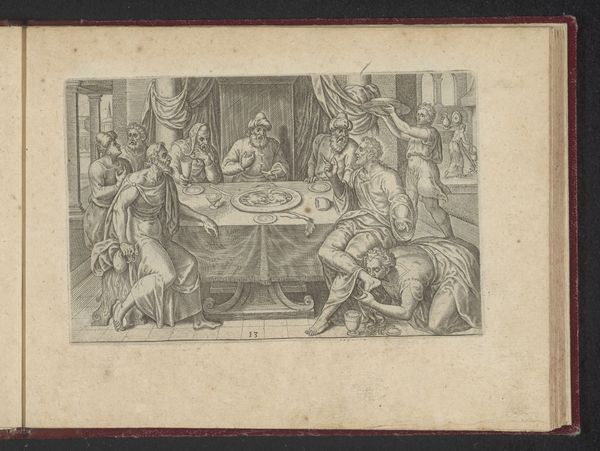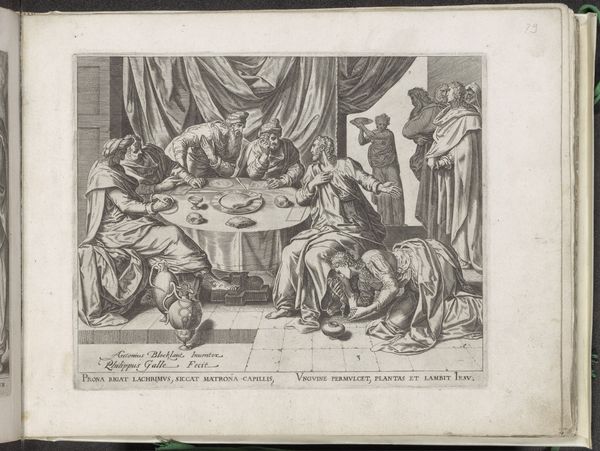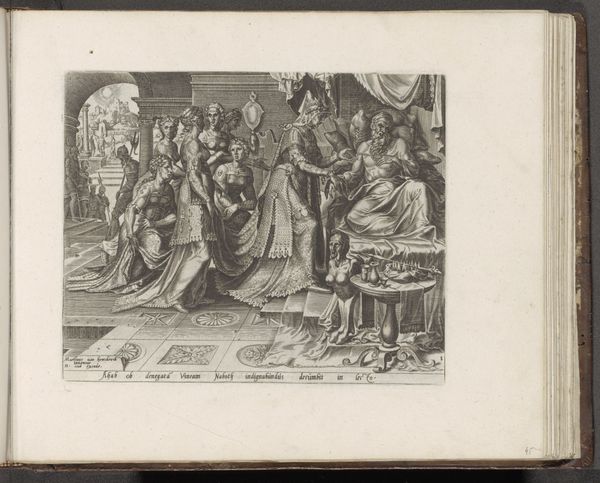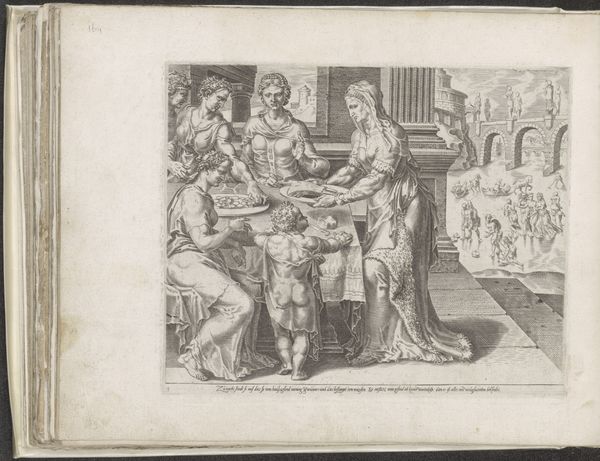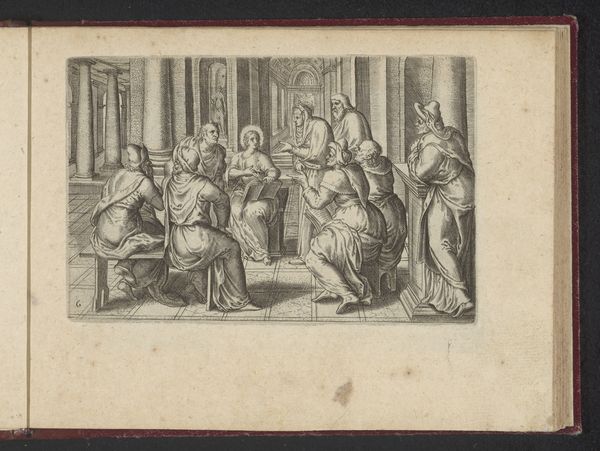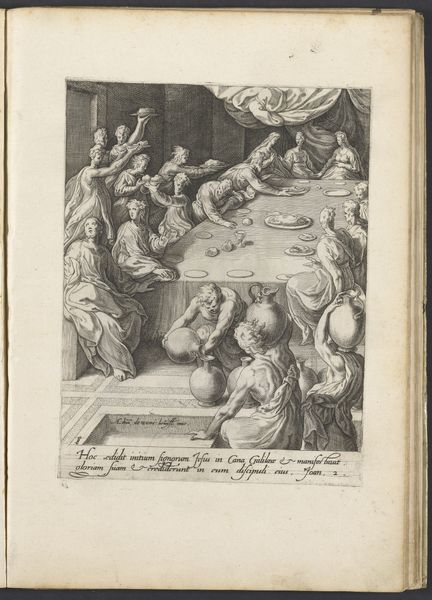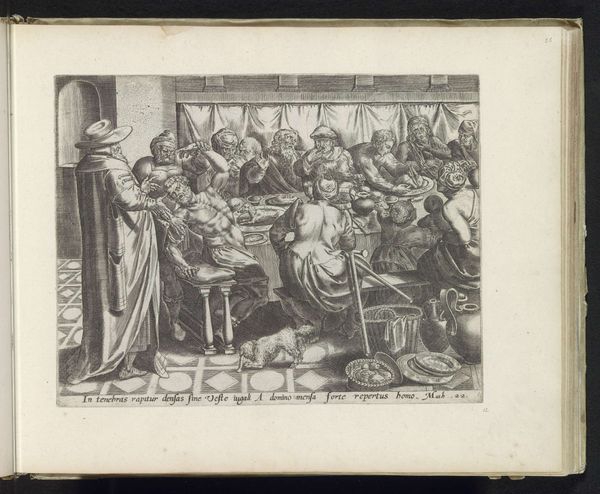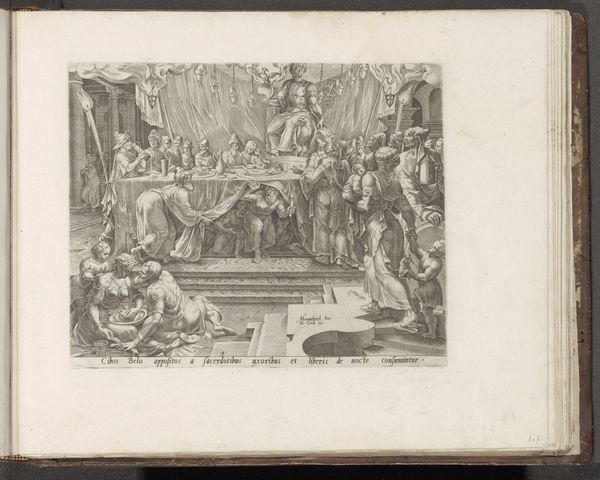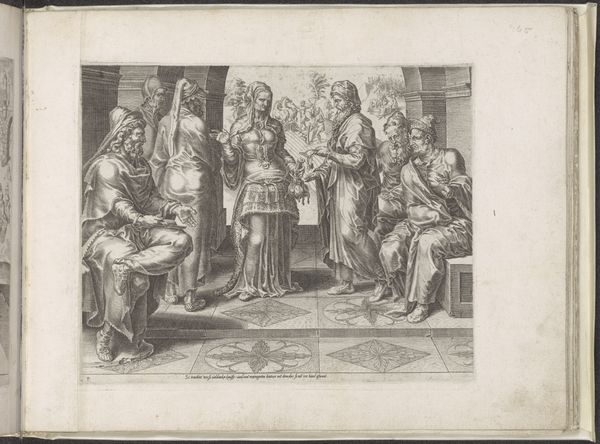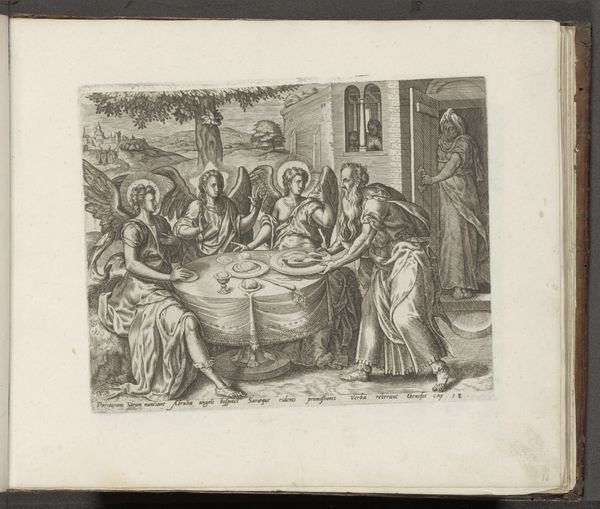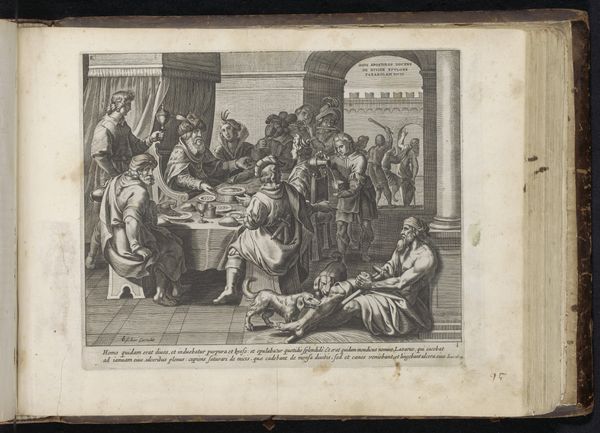
Izebel laat brieven naar de oudsten en aanzienlijksten sturen 1559 - 1579
0:00
0:00
print, engraving
#
narrative-art
# print
#
figuration
#
11_renaissance
#
history-painting
#
engraving
Dimensions: height 199 mm, width 246 mm
Copyright: Rijks Museum: Open Domain
Philips Galle created this print, Izebel laat brieven naar de oudsten en aanzienlijksten sturen, sometime before his death in 1612. It's a small work, made with the intaglio process of engraving. A design is scratched into a metal plate, likely copper, with a tool called a burin, and then ink is rubbed into the grooves, and the plate is pressed onto paper. Engraving was a skilled practice, demanding precision and control. Galle was a master of the technique, and in this print, the dense network of fine lines creates a rich tonal range, capturing light and shadow. The sharp lines give the image a crisp, almost graphic quality. More than just a method of illustration, engraving was a reproductive technology. Prints like this one circulated widely, transmitting images and ideas across Europe, and building the reputations of artists like Galle. Note that the lines of the image are not freehand like a drawing, but etched in a labor-intensive process. This speaks to a different kind of artistic production, where replication, rather than unique expression, was the goal. Galle was not only an artist, but also an entrepreneur, managing a workshop that produced and distributed prints on a commercial scale.
Comments
No comments
Be the first to comment and join the conversation on the ultimate creative platform.
